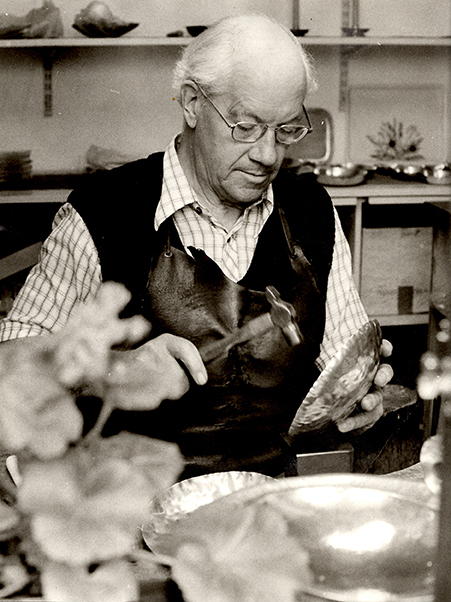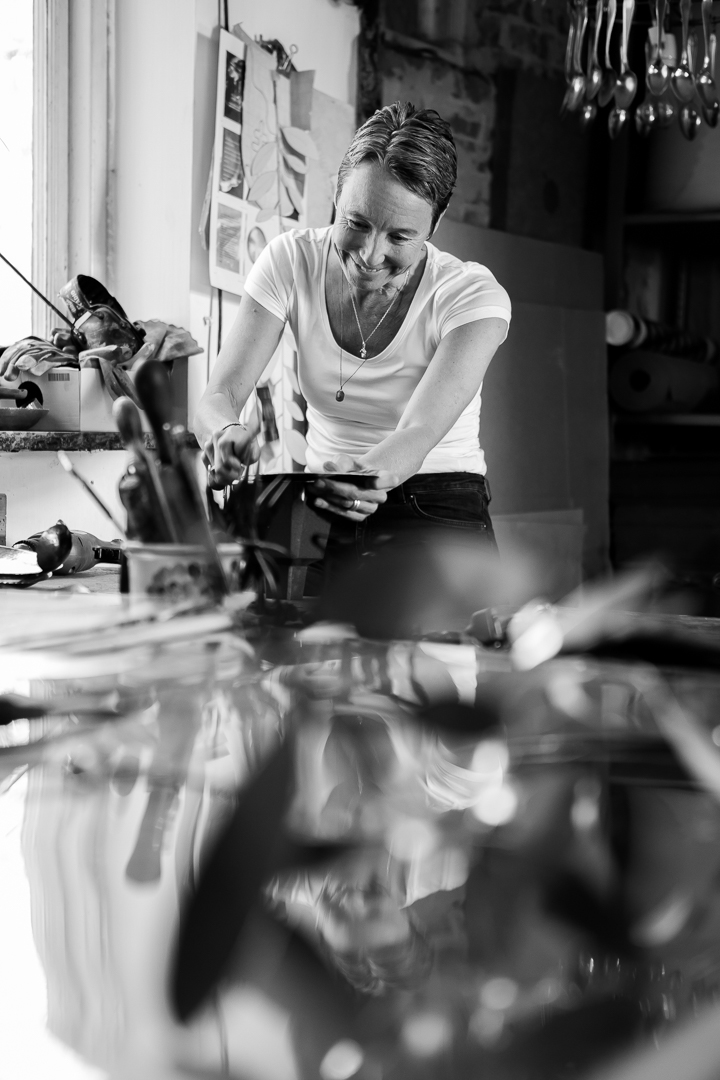History of my handcraft
You can hear it when I work. Iron driving into metal. There’s a rhythm as I forge the rim of a plate. It goes 1-2, 1-2-3, 1-2-3, 1-2. Hammer’s easy in my hand. Floor vibrating. I need everything to be in place before I start. Hammer, yes. Ear muffs. Hallmark stamps. The stock and the material. Brass is hard and obstinate, pewter’s responsive and yielding. Brass needs to be polished, while pewter just grows prettier with time.
On the wall in front of me there’s a picture of my grandfather, mum’s dad, Karl-Erik Torssell. I learnt this handicraft from him. Still; the first thing he said when I asked if I could have a go was – no. No, this is not for girls. It’s too heavy, it’s too hard. So, I nagged him. Please, can’t I just hold the hammer? So he let me.
Granddad taught me everything he knew. How to make the Royal Sconce, for instance. The Swedish king Gustav V bought the first two my grandfather made. They were a wedding gift to Prince Gustav Adolf of Sweden and Sibylla, in the early nineteen-thirties.
I rely on instinct, and the experience I’ve built up. When I look back at what I’ve made, a principle can be discerned. It’s the question I ask of every new idea I get: Is it simple? Will it last? Will it work?

If you hold something I’ve made in your hand, you must sense the time that’s gone into it. When I sit down at the stock with a piece of metal in front of me, time passes but slowly. The ‘now’ solely consists of focused attention. From here time stretches back, so I can find my place in this tradition. And ahead, towards forms yet not conceived.
Craftsmanship is all about this. About time.

